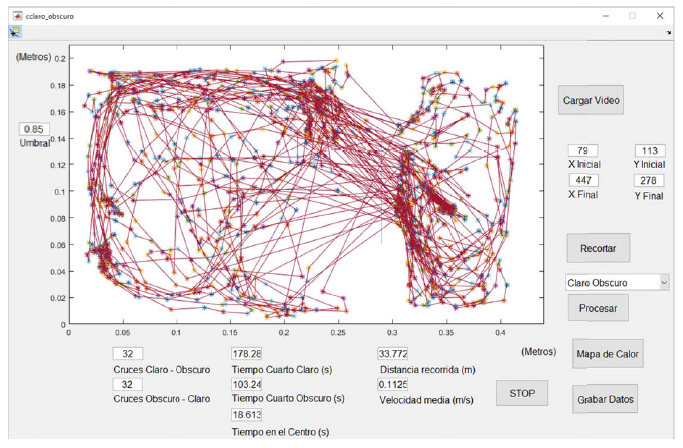Implementation of anxiety evaluation systems in laboratory mice using digital image processing
Main Article Content
Abstract
Currently, there are several techniques to evaluate anxiolytic behavior in laboratory animals since their behavior is very similar to that of humans. Such techniques include manual and observational methods, where the evaluator must carefully observe the entire experiment and document each of the events of interest made by the mouse or acquire electronic equipment that fulfills this function. However, the last option could be expensive. This article proposes the design and implementation of two low-cost anxiety assessment devices (Elevated Plus Maze and Light-Dark Box) using digital image processing, which, after the validation of the operation, delivers results automatically through an application developed in Matlab. The results provided by the application coincide with those that an observer would obtain manually and visually, facilitating the tasks of the evaluator and reducing the possible human errors and ambiguity existing in manual tests.
Downloads
Article Details
Section

This work is licensed under a Creative Commons Attribution 4.0 International License.
Authors who publish in this journal agree to the following terms: Authors retain the copyright and guarantee the journal the right to be the first publication of the work, as well as, licensed under a Creative Commons Attribution License that allows others share the work with an acknowledgment of the authorship of the work and the initial publication in this journal. Authors may separately establish additional agreements for the non-exclusive distribution of the version of the work published in the journal (for example, placing it in an institutional repository or publishing it in a book), with acknowledgment of its initial publication in this journal. Authors are allowed and encouraged to disseminate their work electronically (for example, in institutional repositories or on their own website) before and during the submission process, as it may lead to productive exchanges as well as further citation earliest and oldest of published works.

